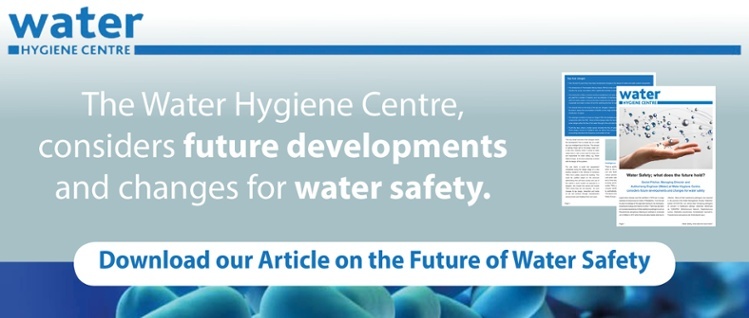Managing the handover of a new build or construction project can be a challenging and complex process. Each project has its unique dynamics, and there can be both successes and failures throughout the journey.
Whether it's a social housing development or a new cancer care centre, the successful delivery of these much-needed facilities is crucial. However, the handover process can be riddled with delays, miscommunication, and costly mistakes without effective management.
Water safety/water hygiene risk management is a critical aspect of any project. However, despite increasing awareness, there are still numerous areas where potential pitfalls and avoidable operational problems persist. These issues can lead to significant setbacks in project execution.
The consequences of neglecting water safety/water hygiene risks can be severe, affecting not only the success of a project but also posing a threat to public health. Seeing valuable time and resources wasted due to preventable errors is disheartening.
Common water safety/water hygiene issues
When it comes to designing water systems, several common issues can occur, including:
- Ineffective design specifications that are not suitable for either the build or the client;
- Unnecessarily overly complex systems;
- Compliance issues when utilising ALARP [as low as is reasonably practicable] principals;
- Inadequate communication between key stakeholders during the specification or design stage, including with the Water Safety Group;
- Unclear responsibilities between the designer and the end user;
- Inadequate Legionella risk assessment can leave you vulnerable to unforeseen disasters;
- Inappropriate materials or fittings can put lives at risk and waste time and money.
Construction projects often face various challenges, such as time constraints, scheduling conflicts, and the involvement of multiple contractors. However, one significant issue that often goes overlooked is the lack of preparedness or the absence of a comprehensive water safety/water hygiene management system. This lack of attention to water hygiene can cause maintenance and project work to suffer.
Unfortunately, many construction projects are plagued by unnecessary water hygiene "snagging" issues that could have been easily avoided. This not only leads to delays and cost overruns but also creates frustration among construction management and clients who were hoping for a smooth and problem-free project delivery.
Legionella in New Builds
Waterborne pathogens such as Legionella and Pseudomonas aeruginosa pose a significant risk to the safety of building water systems. Designing new buildings and their water systems without proper precautions can lead to costly remedial works and compromised safety.
Without a proactive approach to water system design, installation, commissioning, operation, and maintenance, building owners are exposing themselves to potential health risks, financial burdens, and legal liabilities. Neglecting these crucial steps can result in severe consequences for both the occupants and the reputation of the organisation. This is where your Water Safety Plan can provide some clear structure to the project, helping to avoid any complications.
Water safety/water hygiene key considerations
- Project Manager's Responsibility: The project manager plays a pivotal role in identifying potential water safety/water hygiene issues and mitigating them. They need to have a comprehensive understanding of water safety/water hygiene requirements and ensure that they are integrated into the project plan from the outset.
- Clear Communication and Accountability: Establishing clear lines of communication and accountability is crucial. This includes defining roles and responsibilities for all stakeholders involved in the project, from architects and engineers to contractors and water safety/water hygiene specialists.
- Thorough Review: It's essential to allocate time within the tender specification for a thorough review of the water safety/water hygiene aspects of the system. This review should encompass all stages of the project, from design and construction to commissioning and ongoing maintenance.
- Compliance with Regulations: Ensure that the project adheres to all relevant regulations and guidance (e.g., BS8680 Water Quality). Compliance with these standards is highly recommended but also essential for public health and safety.
- Risk Assessment: Conduct a comprehensive Legionella risk assessment specific to the project, considering factors such as water source, storage, distribution, and usage. Identify potential hazards and develop mitigation strategies.
- Monitoring and Testing: Implement a monitoring and Legionella sampling program throughout the project to maintain water quality. This should be part of the project's ongoing maintenance plan.
- Documentation and Reporting: Maintain detailed records which can be invaluable for demonstrating compliance and addressing any issues that may arise in the future.
- Training and Awareness: Ensure that all personnel involved in the project receive adequate Legionella training. Awareness of potential risks and the importance of maintaining water quality should be emphasised.
- Contingency Planning: Develop contingency plans for handling unexpected issues during construction or after project completion. Having a well-defined response plan can minimise the impact of unforeseen challenges.
- Budget and Schedule Considerations: Recognise that investing in water safety/water hygiene measures may add to the project's initial cost and timeline. However, these investments are crucial for the long-term sustainability and safety of the system.
In conclusion, water safety/water hygiene risk management is an integral part of construction projects, and it's vital to prioritise it from the project's inception. By establishing clear lines of communication, accountability, and responsibility, and by conducting thorough reviews and adhering to regulations and guidance, you can ensure that the project delivers the required water quality for its intended purpose and avoids costly and long-lasting issues.
Feel free to reach out if you have any questions about this blog or if you would like to consult with one of our experts for further advice on water hygiene.
Editors Note: The information provided in this blog is correct at the date of original publication – October 2023
© Water Hygiene Centre 2023









